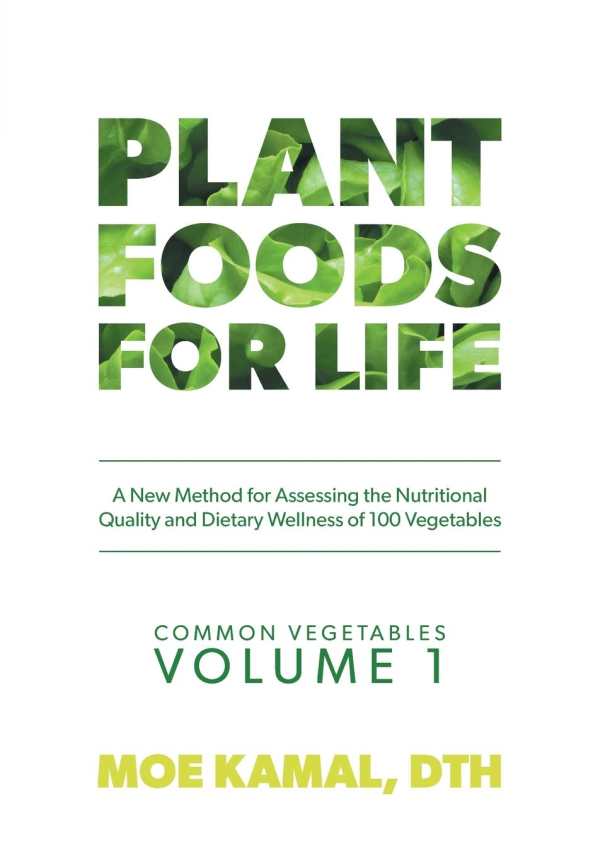
Plant Foods for Life
A New Method for Assessing the Nutritional Quality and Dietary Wellness of 100 Vegetables
Plant Foods for Life is an indispensable guide to vegetable nutrition that’s geared toward practical use.
Moe Kamal’s Plant Foods for Life is a practical desk reference for selecting nutritious vegetables.
Detailed and thorough, this book presents the nutritive qualities of vegetables in an accessible way that’s reminiscent of an encyclopedia. With the exception of its appendix, usage instructions, and introduction, it is organized as a series of entries covering one hundred vegetables and plants, with two pages given to each, including a detailed table of their properties. A few fruits, including avocados and tomatoes, appear as well.
The book’s reference format makes it invaluable. It has no pretensions toward vegetable evangelism; instead, it presumes audiences who are vegetable converts seeking professional guidance, with consumers, grocers, nutritionists, and physicians named as among them. Basic cooking and selection instructions are included, as are tips for avoiding expired or unhealthy vegetables. A general discussion of the presence and significance of pesticides and plant toxins plays into a recommendation that those with medical issues avoid particular foods.
The text avoids fad diets, amplifying its usefulness to newcomers. While it includes entries for vegetables that are less common, including sunchoke and taro, it shows no bias toward plant trends: avocados and yams appear, but they are not high on the book’s list of recommended foods. Instead, greens, including spinach and beet leaves, are its nutritional standouts.
A list of foods ranked by nutritional value appears in the appendix—a good shorthand to the foods presented as most nutritious. An index that encompasses alternative names for the one hundred plant foods covered rounds out the text. An original nutritional content scoring system is also included, with instructions for employing it in the book’s early sections. A “How To Use This Book” section proves essential for navigating the text, explaining how to interpret the information in each entry.
While there are few blocks of text in the book, it is primarily formatted into tables and informational entries that are organized under clear subheadings, making it easy to use and reference. The book’s appendix, which includes information about nutrition, pesticides, and the components of the human body and its systems, is valuable. All information throughout the book is clear and contextualized. An unapologetic tool, the text’s usefulness depends on audience engagement, but its learning curve is shallow.
Every aspect of this book is geared toward practical use, making Plant Foods for Life an indispensable guide to vegetable nutrition.
Reviewed by
Anna Call
Disclosure: This article is not an endorsement, but a review. The publisher of this book provided free copies of the book and paid a small fee to have their book reviewed by a professional reviewer. Foreword Reviews and Clarion Reviews make no guarantee that the publisher will receive a positive review. Foreword Magazine, Inc. is disclosing this in accordance with the Federal Trade Commission’s 16 CFR, Part 255.
